Series: The Quarry as Witness
Régi kőbánya, Gyenesdiás, Hungary
2020
On the northern edge of the Hungarian village of Gyenesdiás, nestled on the slope of Pipa-hegy hill, lies a forgotten landscape — an abandoned dolomite quarry. Its pale grey walls preserve the memory of the ancient Tethys Ocean: more than 200 million years ago, during the Upper Triassic period (237–205 million years ago), warm shallow seas accumulated lime-rich sediments composed of the shells of tiny marine organisms. Through the action of microorganisms, these deposits transformed into a dense, compacted mass of calcium and magnesium carbonates — dolomite.

Covering an area of approximately 400 × 400 meters, the quarry is now silent and overgrown. It is divided by a narrow ridge into a spacious eastern section and a smaller western one. The eastern basin is particularly striking: nature has sculpted ravines, terraces, and canyons whose almost fantastical forms resemble an ancient amphitheater. The slopes and ledges are largely covered with black pine and brushwood, and each groove or outcrop feels like a mark left by both geological time and human intervention.
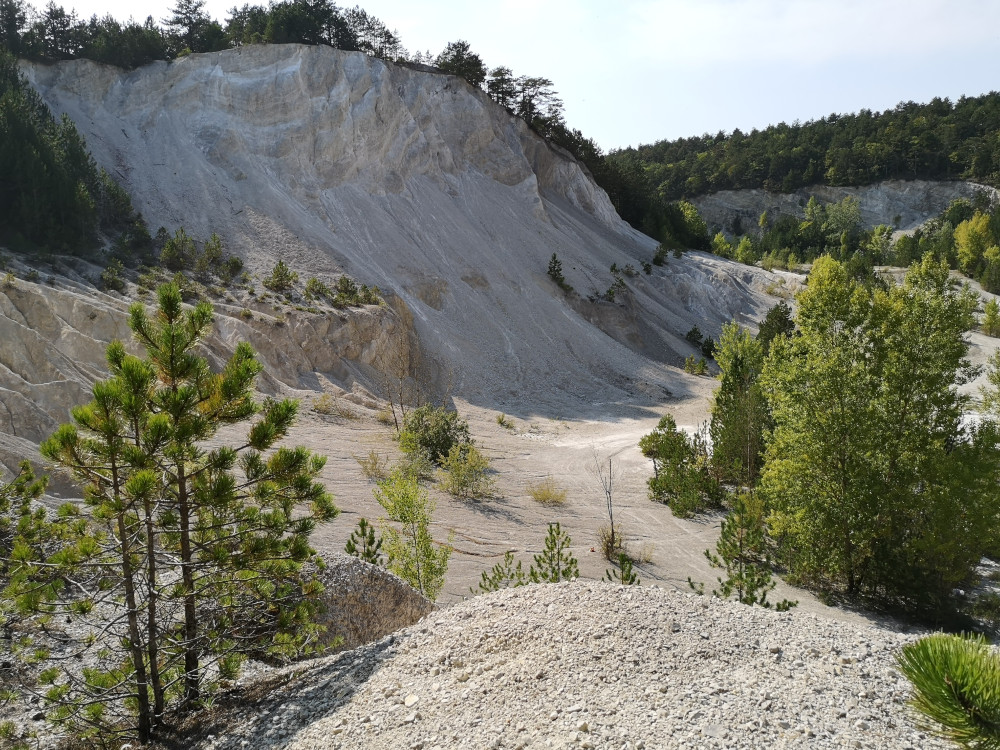
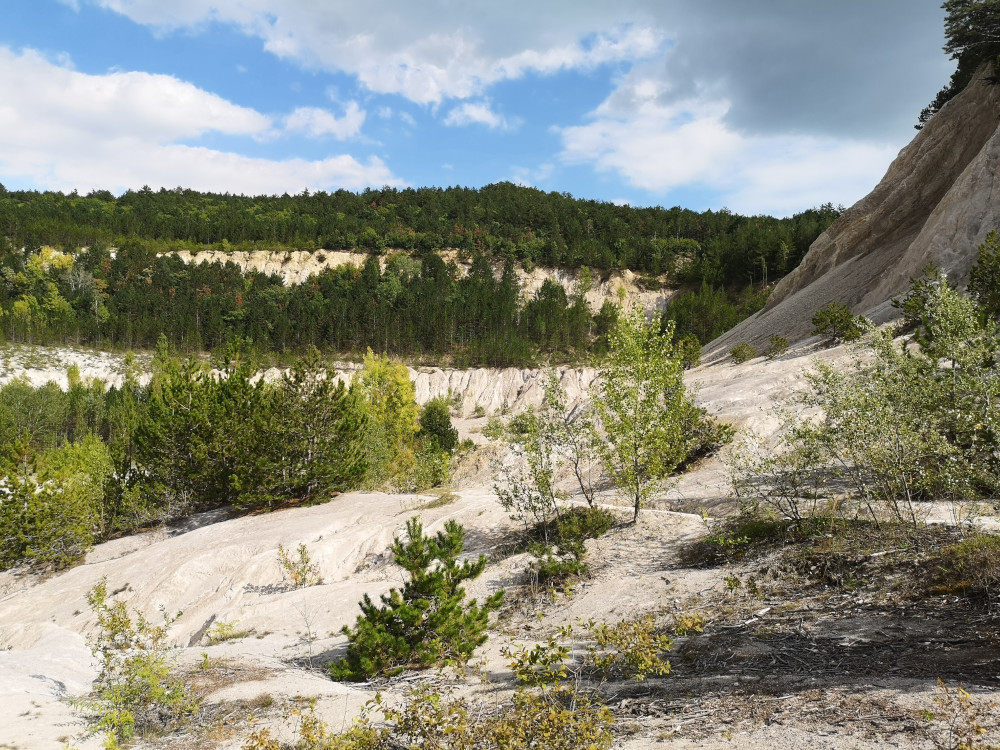
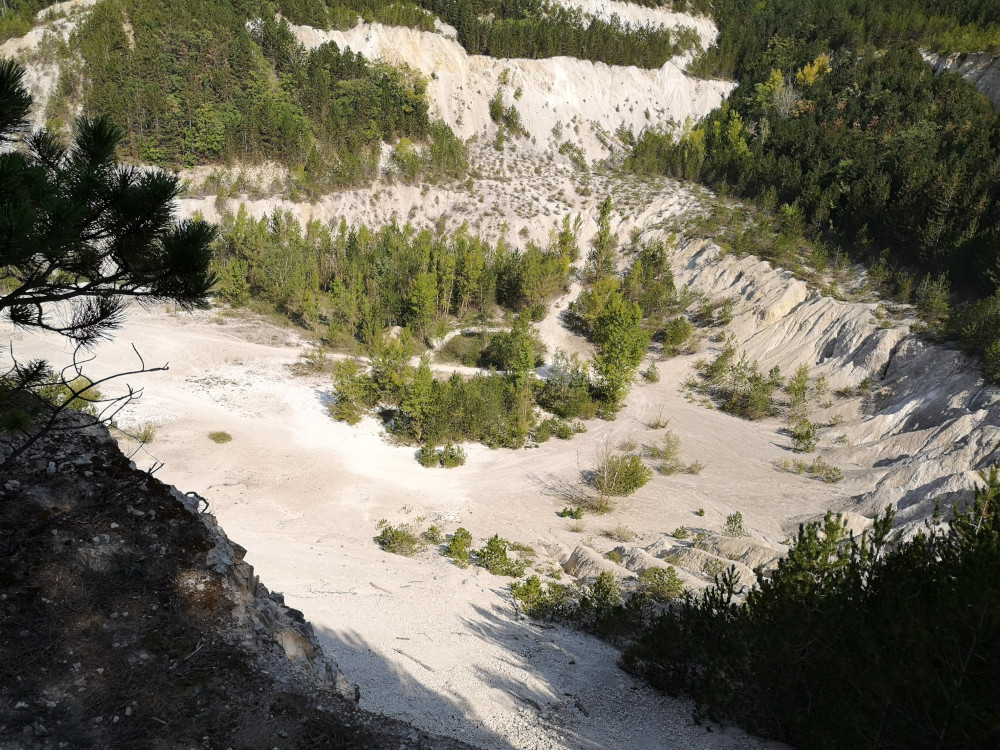
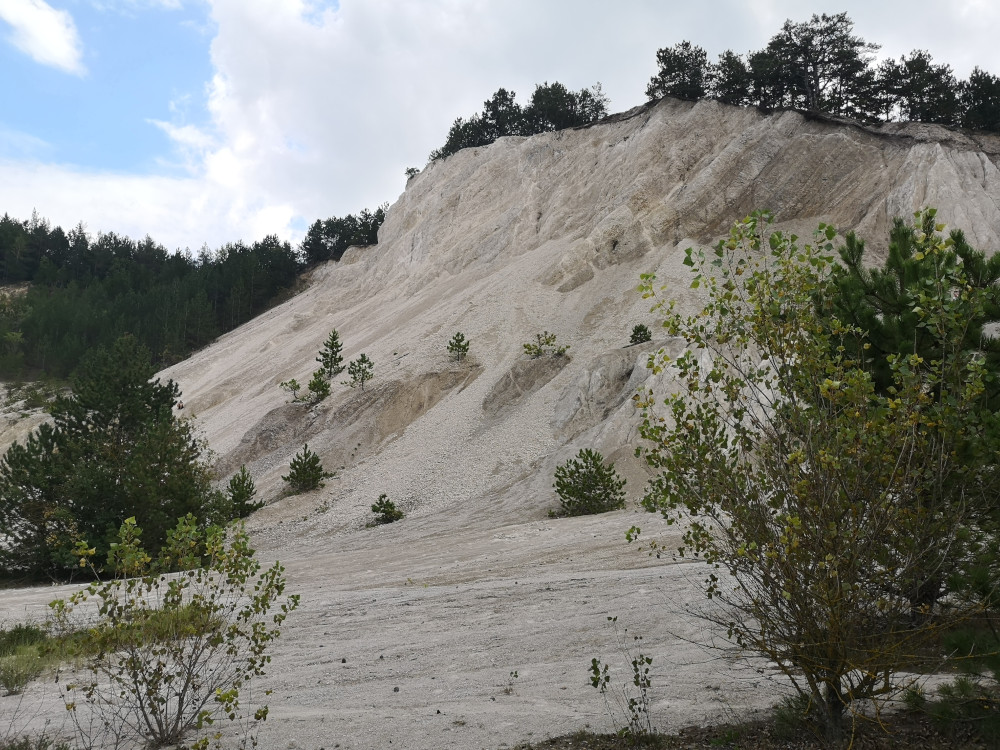
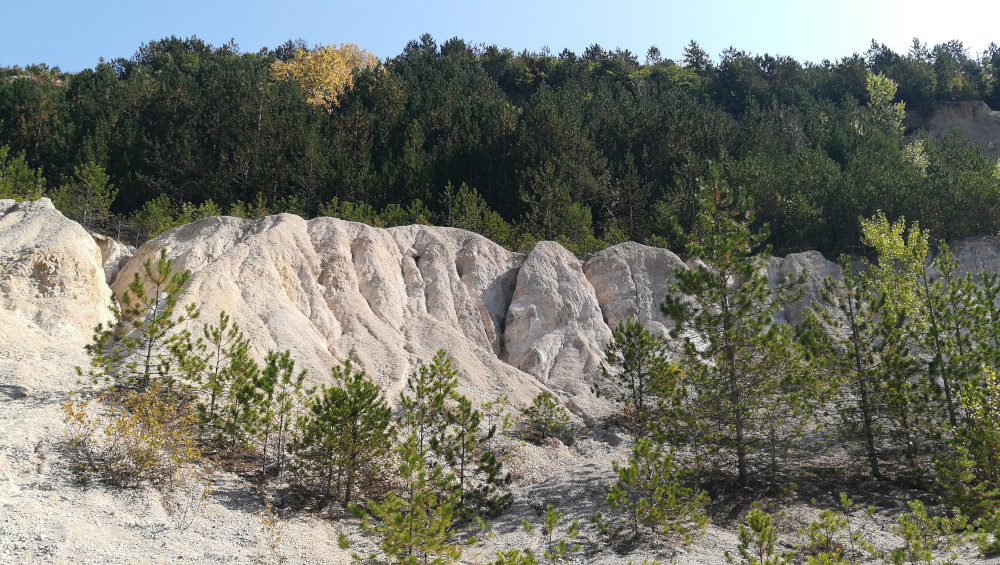

Once, the quarry supplied valuable materials for construction and industry. Dolomite was used as aggregate in building, as flux in metallurgy, to neutralize acidic soils and enrich them with calcium and magnesium in agriculture, as well as in the production of glass and refractory materials. [ 1 2 3 ]
Today, with its industrial role long gone, the quarry returns to nature — and simultaneously opens itself to artistic contemplation and action. As part of the series “The Quarry as Witness,” we approach such places as living archives: not only of geological memory, but of the potential for interaction between human presence, form, and time.
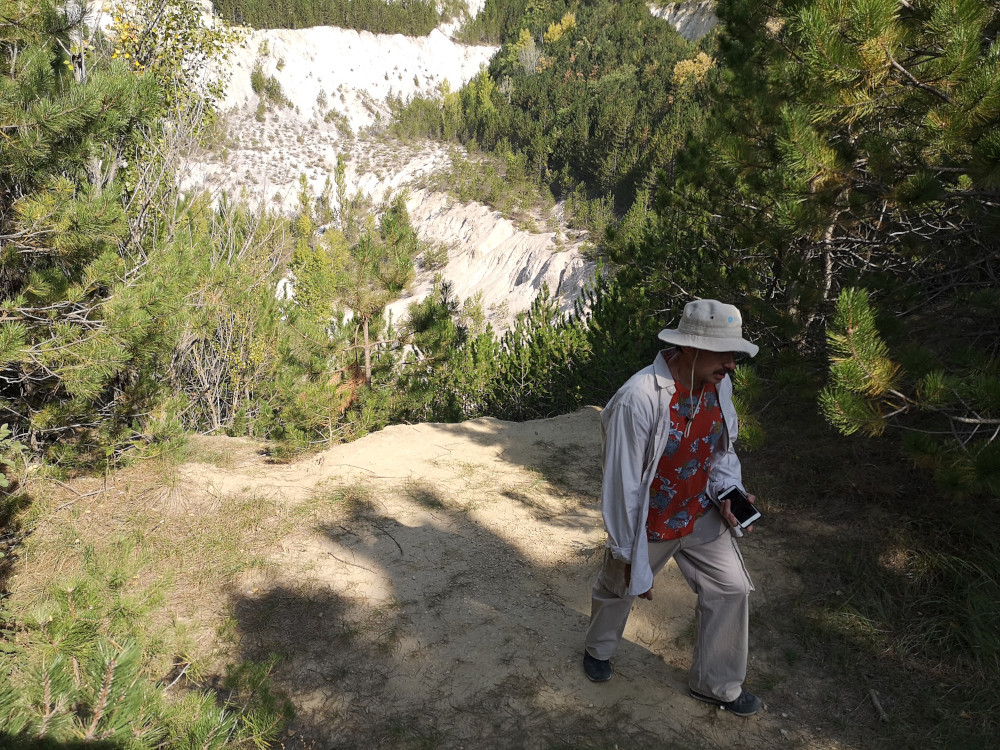
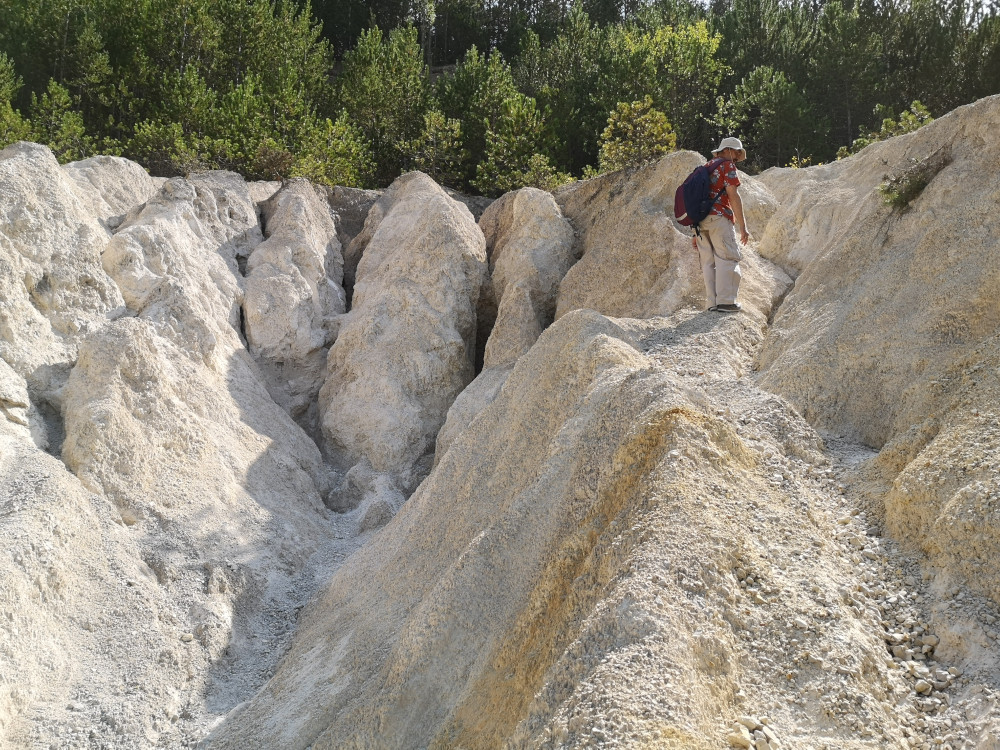
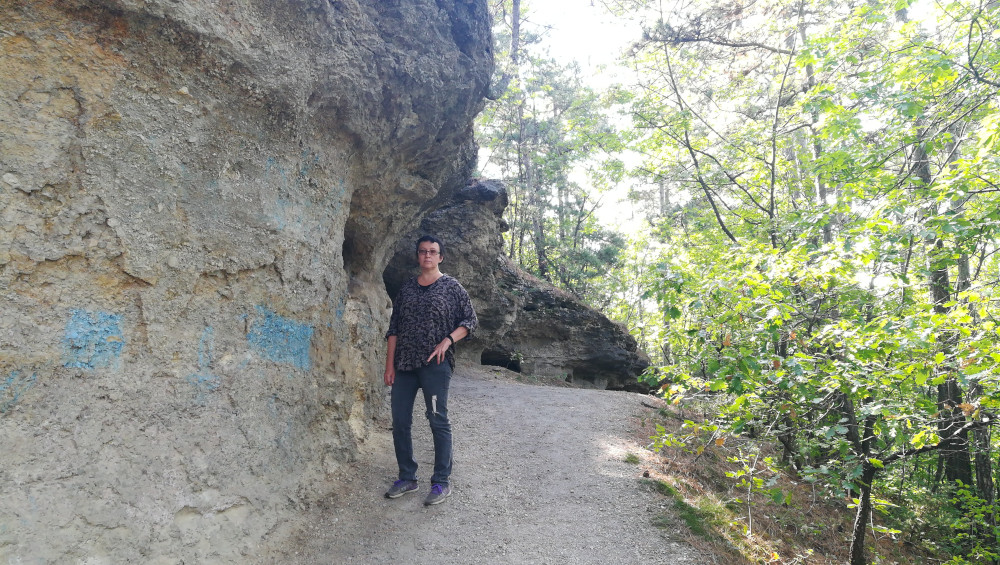
As part of the Deerland art festival in September 2020, we conducted a series of artistic explorations in the old quarries around Gyenesdiás, Hungary. One of the key events was the creation of The Native Deer — an ephemeral geoglyph formed in an abandoned dolomite quarry on the hill of Pipa-hegy. The project became a spontaneous yet profound collaboration with the landscape itself, where natural forms revealed the image that was meant to appear.
Originally, we planned to work in another pristine white quarry, but upon arrival discovered it was again under excavation. We had to change location quickly and chose the old, forest-overgrown quarry. We descended to a light clearing that intuitively called for action.

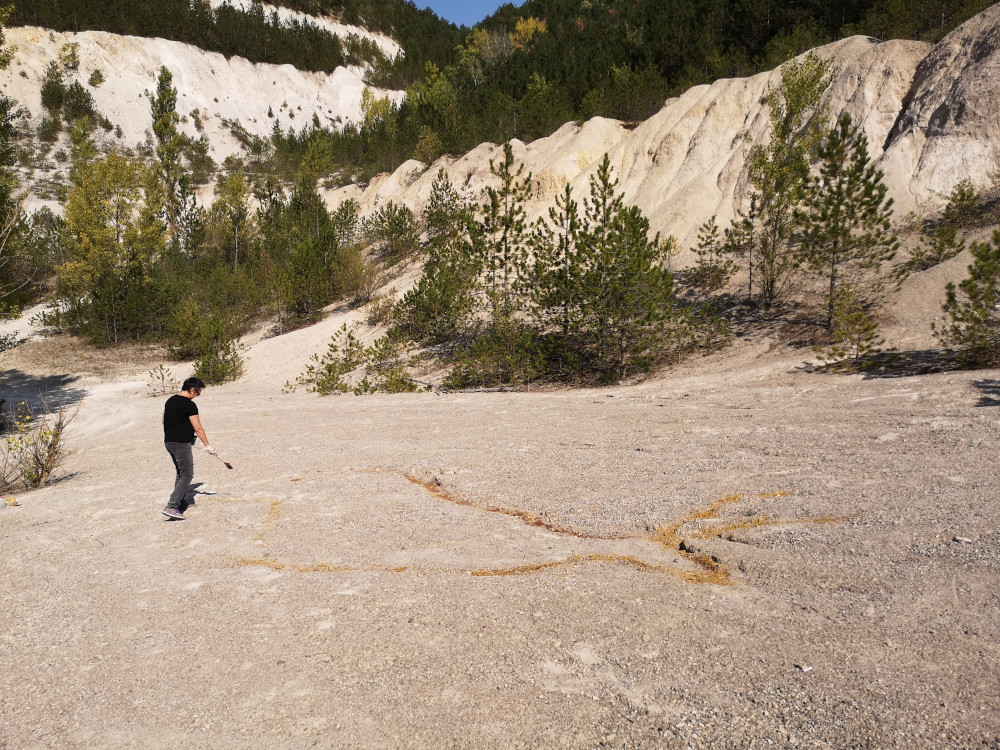


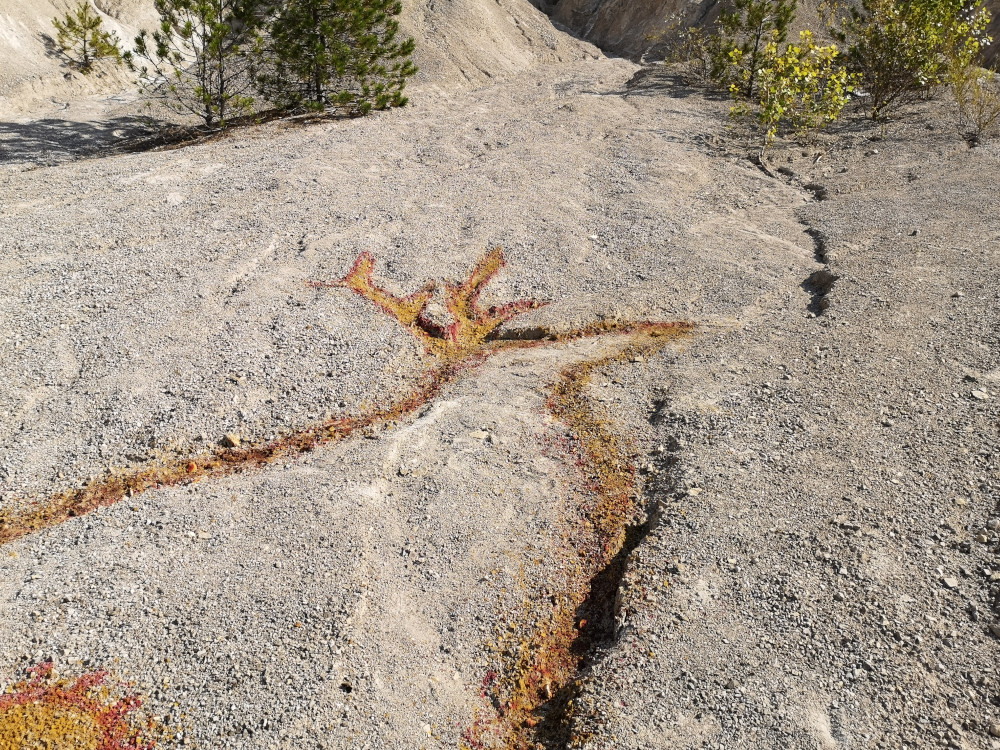
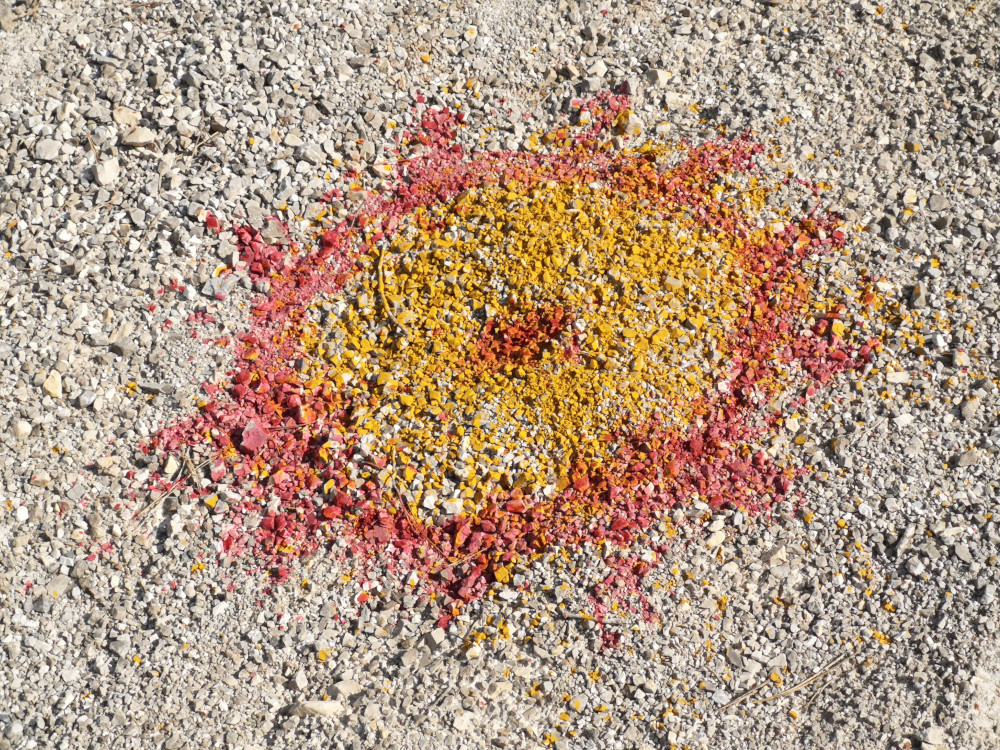
The Szamorodni Deer, 2020 (process and details)
Our original sketch — a two-headed elk — didn’t match the terrain. But the natural streams and grooves already suggested another deer’s form. I merely “revealed” it with pigment splatter. Later, a heart appeared in the center, turning into a sun. (Instagram)
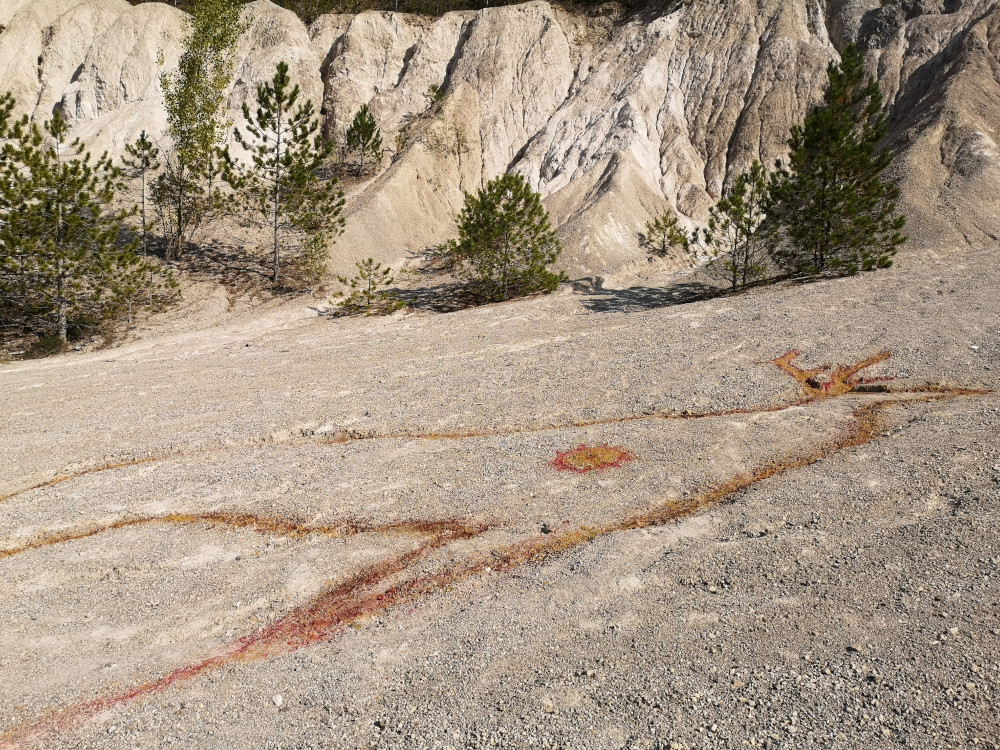
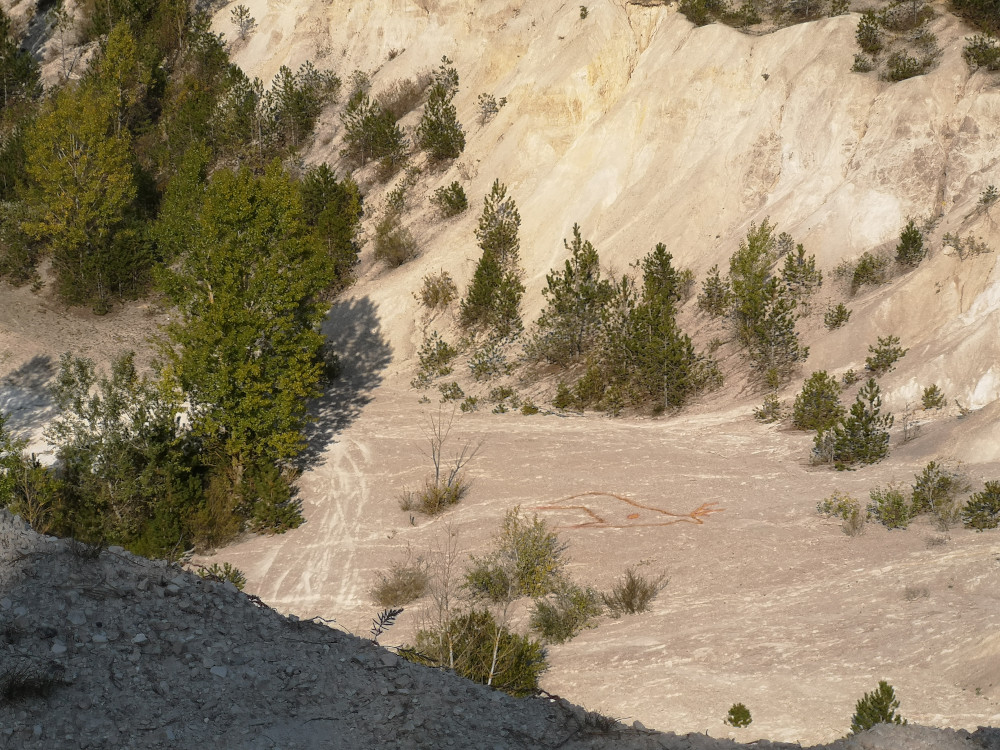
The Szamorodni Deer ephemeral geoglyph, ~ 3 × 5 meters. Materials: pigments (ochre, wine, chocolate), water. Technique: pigment splatter. Co-author and photographer: Dmitry Razhev
Meditation inside the deer and Performances around
A week after the geoglyph was completed, we conducted a performance inside its outline — a physical alignment with the symbolic shape. The body tuned into the place, activating its latent presence. (Instagram 1 2 3 4)
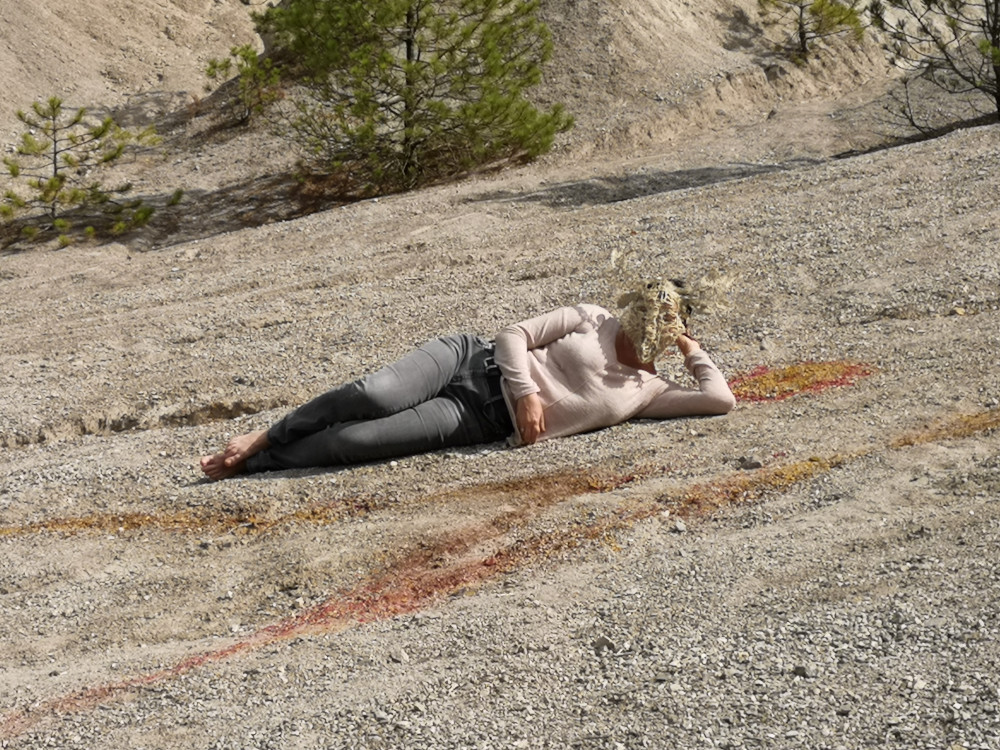
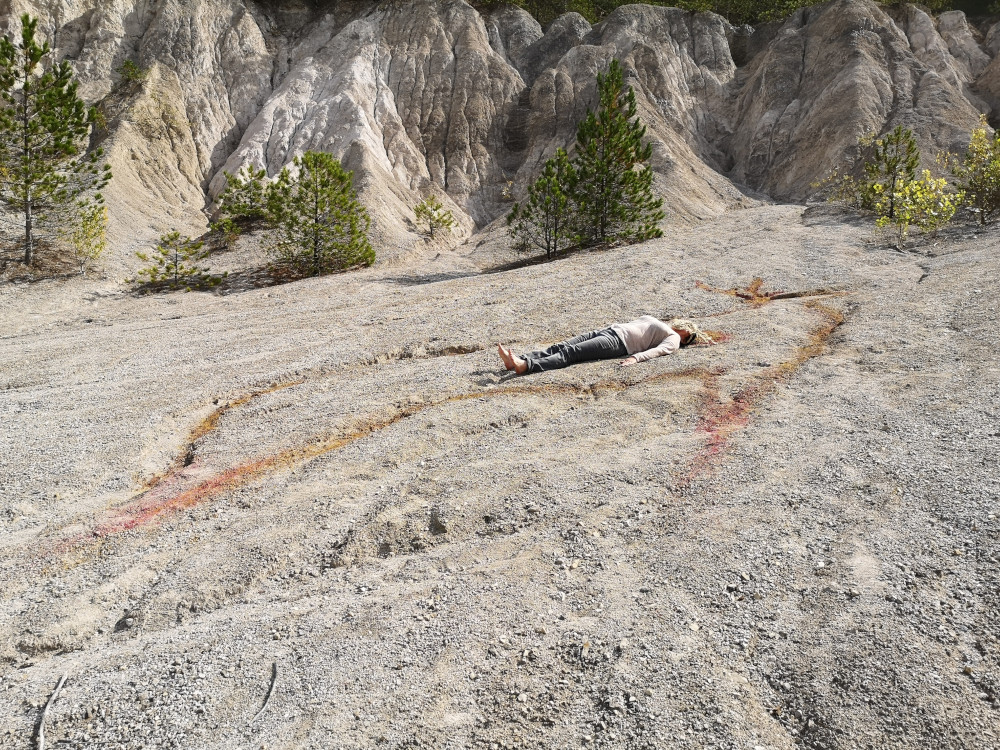

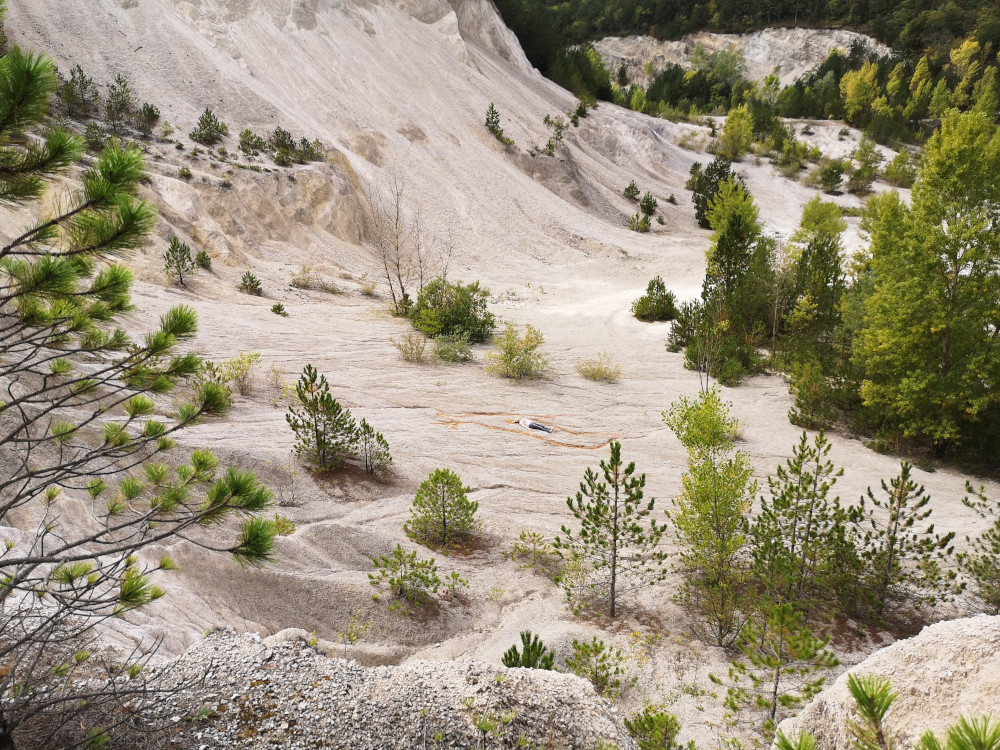
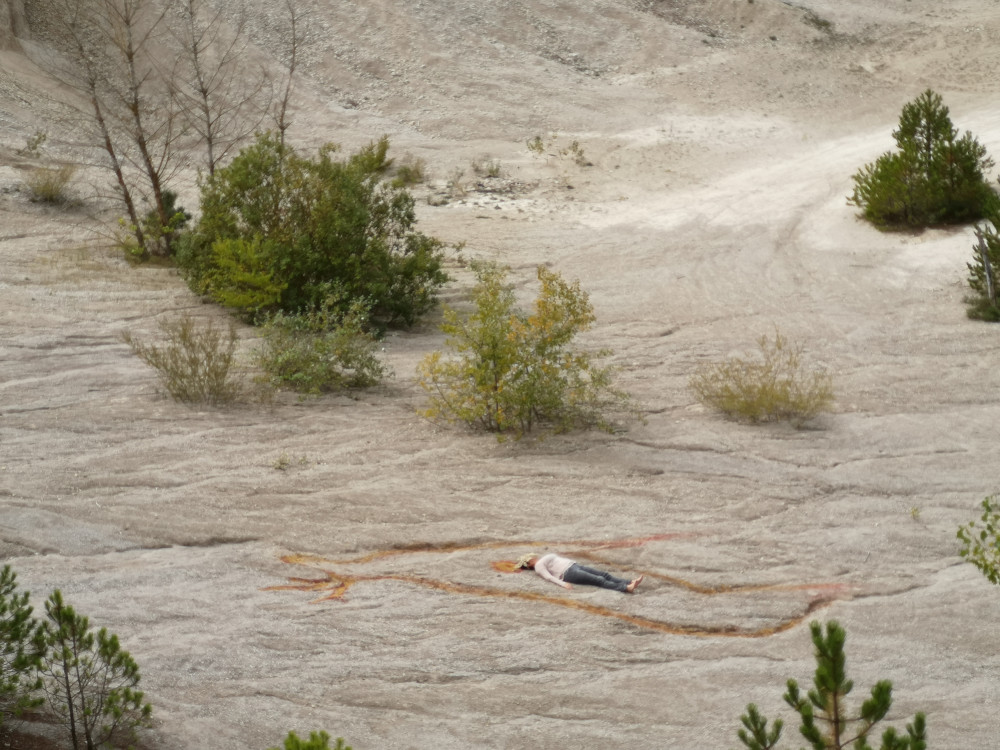
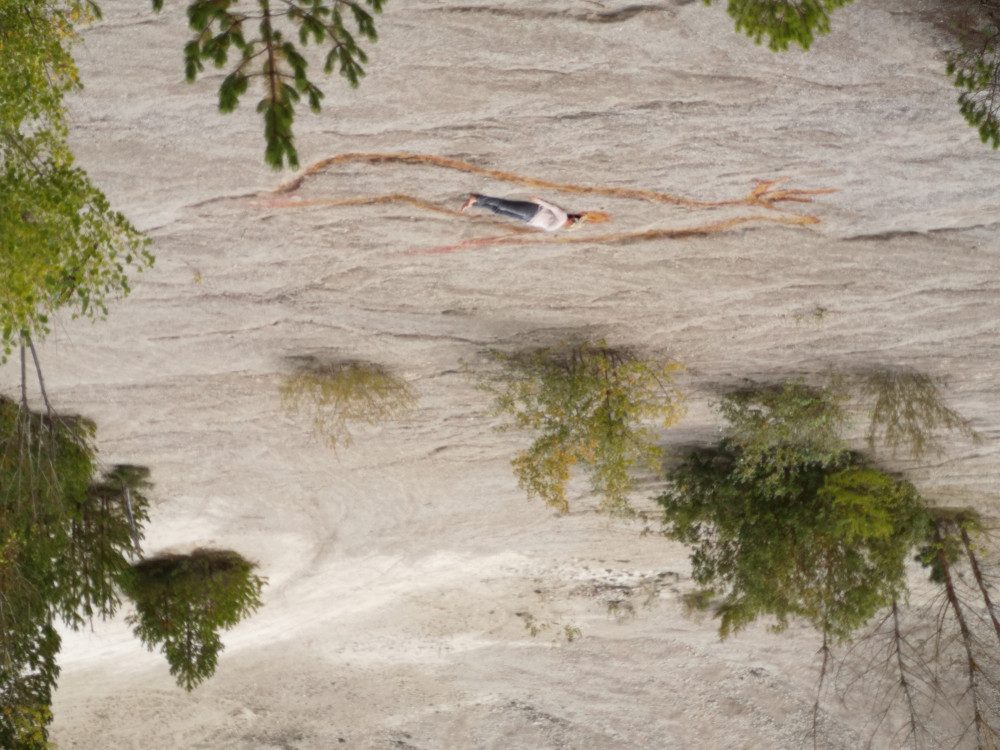
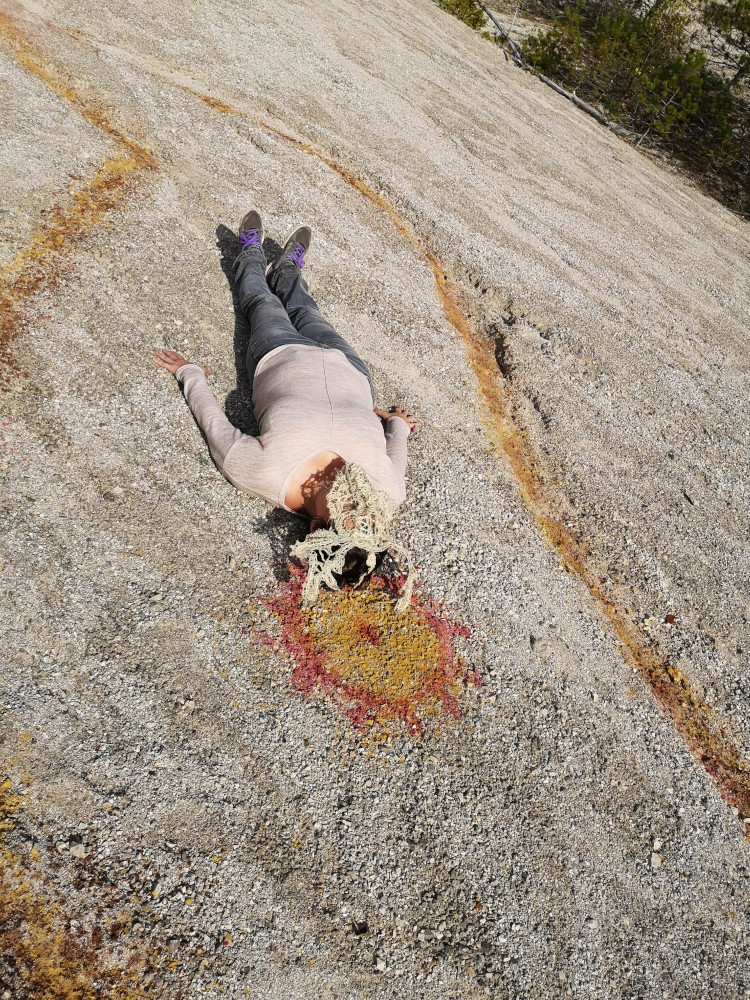
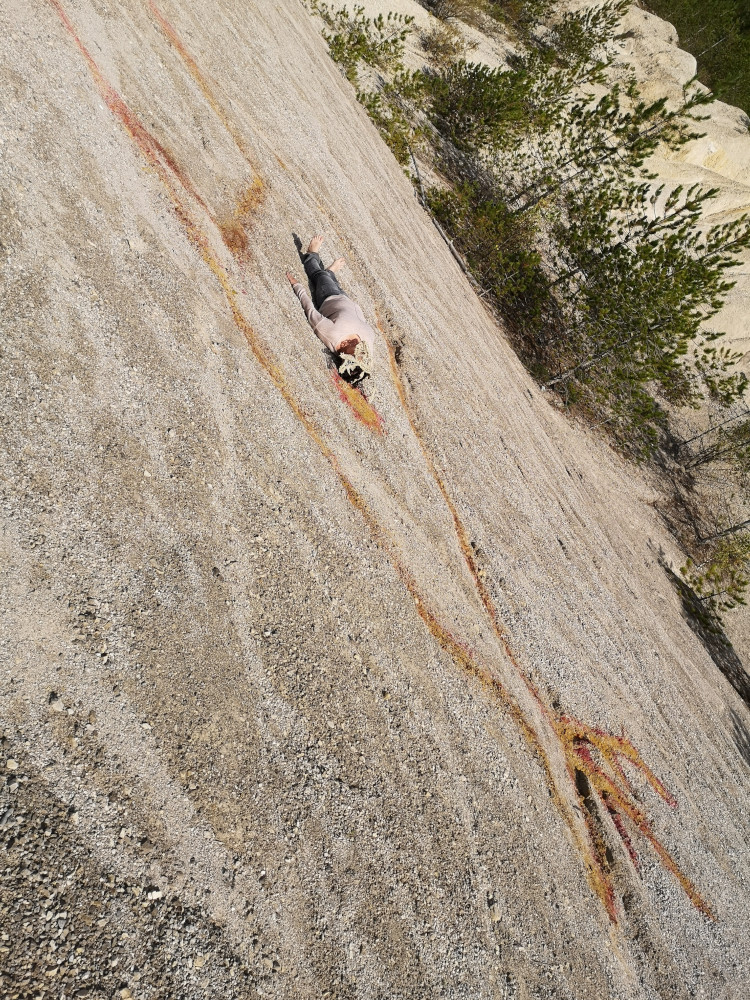

Spiral with a Deer Hoof Stamp
Using a sponge stamp in the shape of a deer hoof, we created a double spiral: coiling inward in ochre, then unwinding outward in red. From above, the form resembled spiraling time — folding and unfolding. (Instagram)
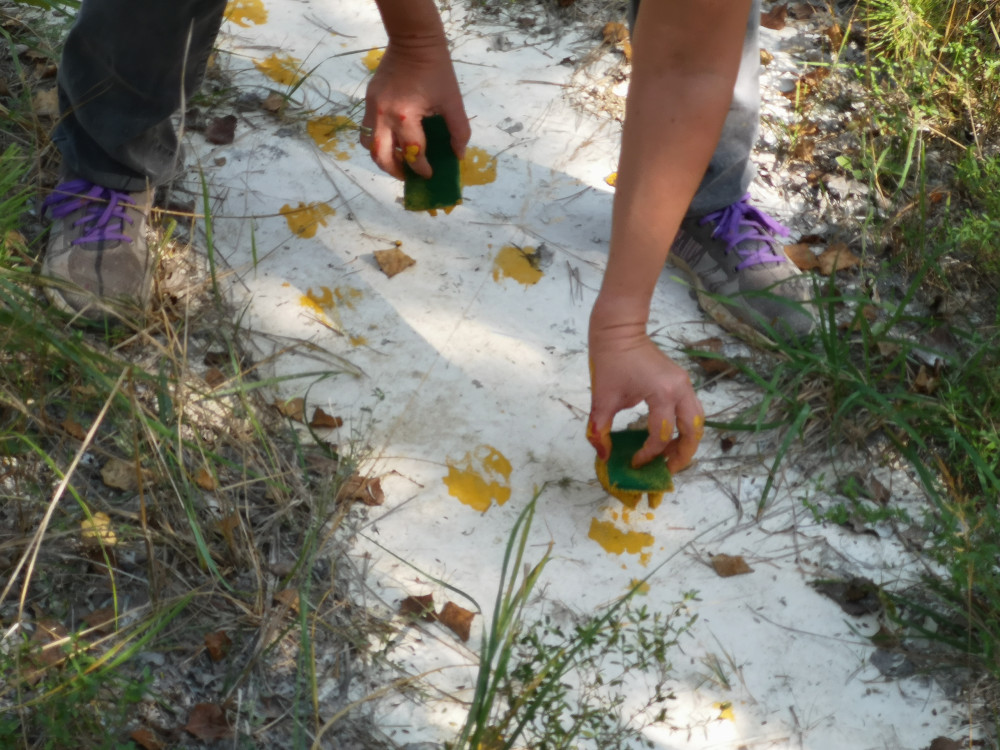
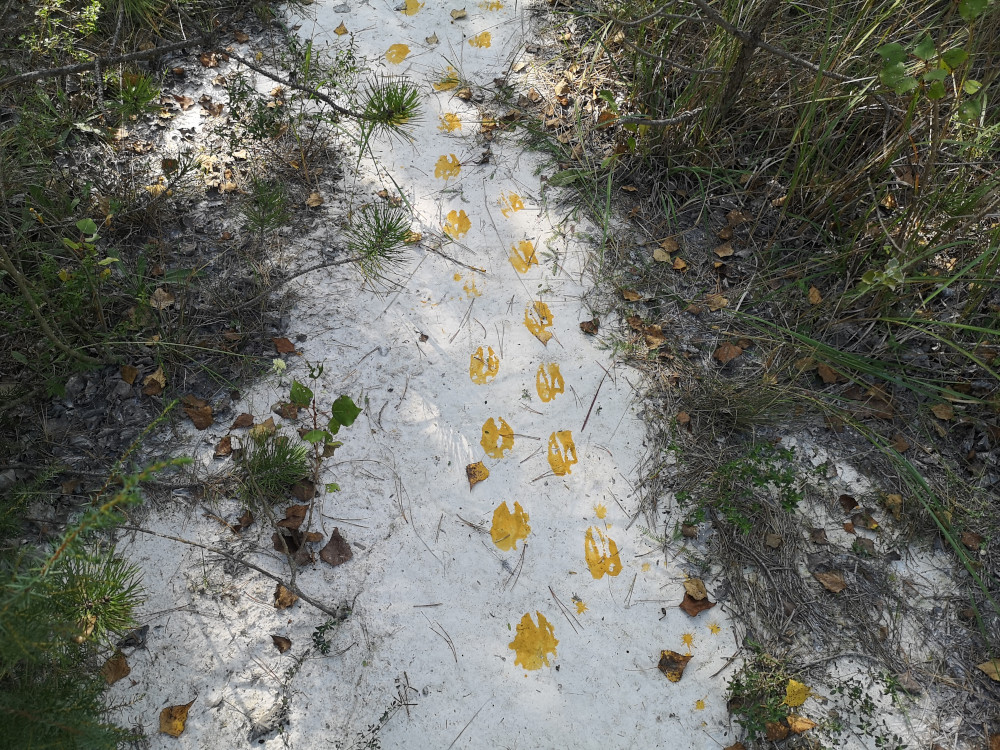
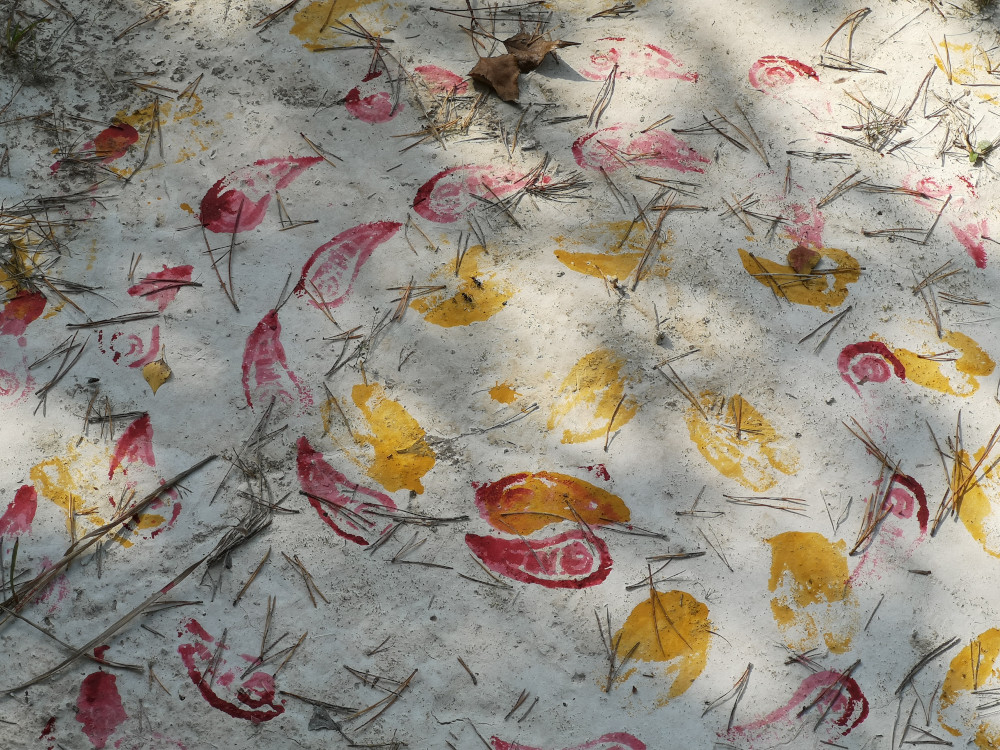
Cave Deer
Next to the site, we found a man-made cave — likely carved out during stone extraction. Inside it, we staged a photo performance titled Cave Deer: shadowy images on the walls like memory archetypes. This added a subterranean dimension to the project, deepening the connection between human, stone, and symbol (Instagram)
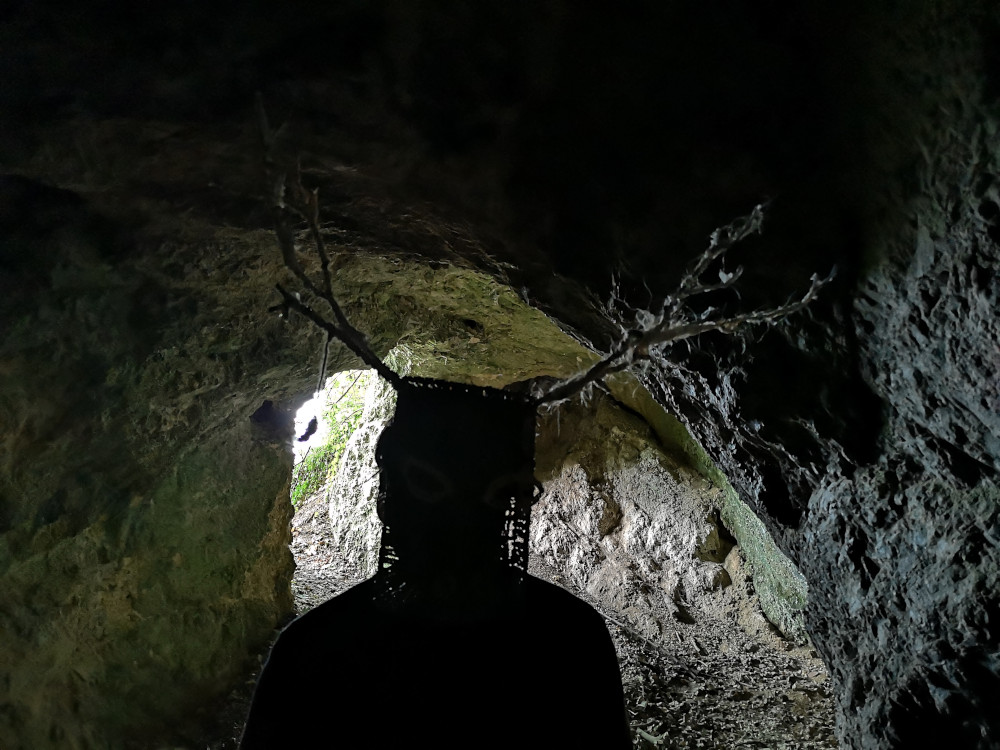
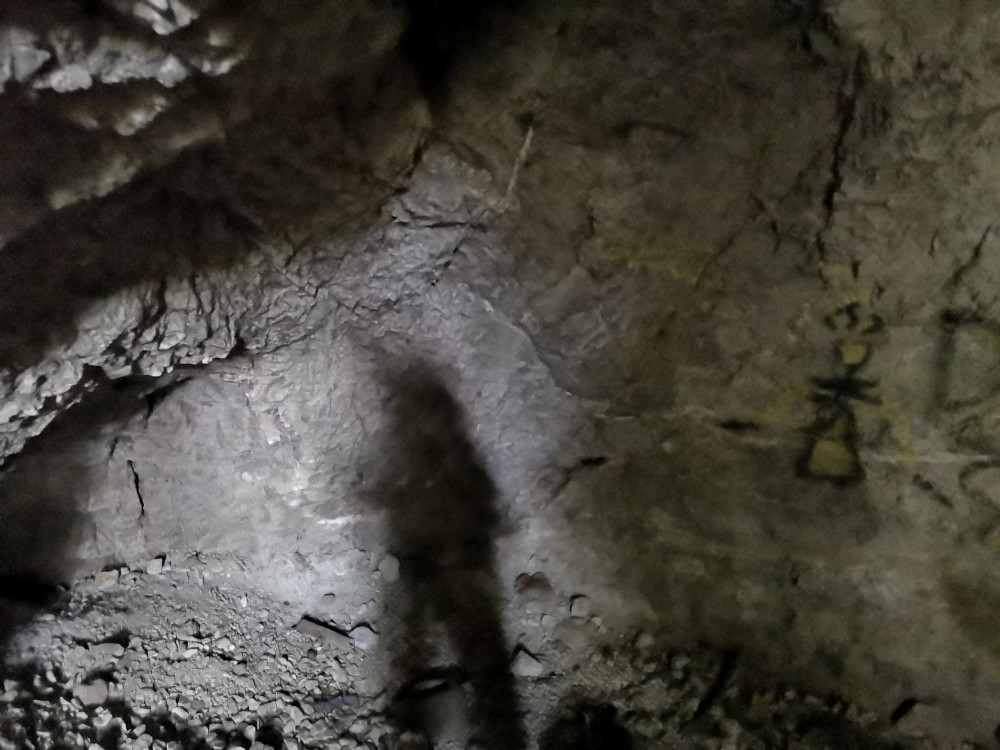
This work belongs to our practice of RR-method — an approach where the artist does not impose a new form, but listens attentively and reveals what is already present in the landscape. Here, the environment itself acted as both witness and co-author.
Although nothing went as planned — we changed location, abandoned the original idea, and adapted the technique — the result was unexpectedly precise. We simply uncovered what was already embedded in the place.
That’s how the Samorodny Deer appeared — an ephemeral trace shaped by streams, stones, and light. A month later, it vanished without a trace, as intended. What remains is memory, and the documentation.
But most importantly, what remains is the experience of co-creation with the land — where the quarry was not just a backdrop, but a protagonist.